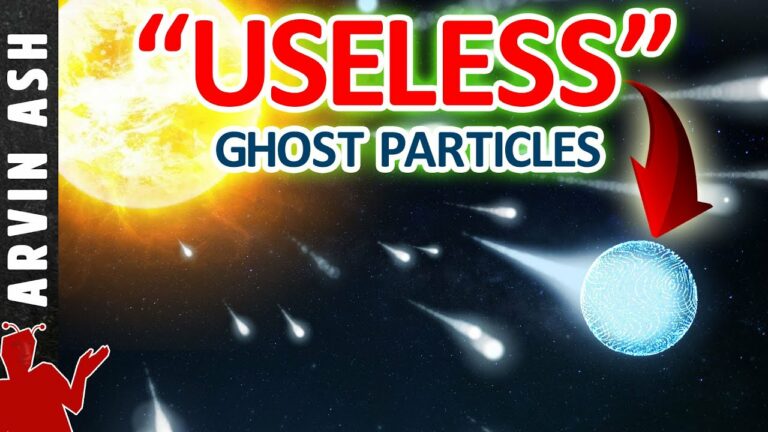Neutrinos: Why Do These “Useless” Ghost Particles Exist?
Are Neutrinos useless? Would we exist without neutrinos? What are neutrinos? And what purpose do they serve? Where do Neutrinos come from?
They are the second most abundant particles after photons. They do not carry a charge, and they interact very weakly. This why they can go right through the earth without interacting with anything. So how did we know they existed?
They were first theorized in 1930 by Wolfgang Pauli. He was trying to solve a mystery in physics – why some of the energy in a radioactive Beta decay appeared to be missing. A beta decay occurs when an atom has too many neutrons or protons in its nucleus. When there are too many neutrons, the nucleus becomes more stable by transforming a neutron into a proton. This process emits an electron.
Pauli proposed that perhaps a second invisible particle was being emitted along with the electron, which carried the different energies, allowing for overall energy to be conserved. Enrico Fermi later coined the term Neutrino for this particle.
How were they experimentally detected if they don’t interact with anything? They are so abundant that if you build a detector large enough, and leave it on for long enough, a small percentage of these neutrinos will interact often enough that we can detect them. They were confirmed experimentally in 1956 by Fred Reines and Clyde Cowan, for which a Nobel Prize was later awarded. Their detector weighed 10 tons and was placed near a powerful fission reactor. The fission and fusion processes produce a lot of neutrinos.
The tremendous fusion reactions inside stars like our sun is the reason these particles are so abundant. How are neutrinos produced in the sun? When the sun fuses Hydrogen to Helium, the end result turns 4 protons into a helium nucleus consisting of 2 protons and 2 neutrons. This process produces two positrons and two neutrinos.
Neutrinos were initially thought to be massless, but we now believe that they do have mass because the neutrinos from the sun went missing. We didn’t detect nearly as many neutrinos as we should have. This was called the “Solar Neutrino Problem.” It turned out that neutrinos, come in three different types, called “flavors.” The flavors are electron neutrinos, muon neutrinos and tau neutrinos. Electron neutrinos were the ones we were looking for, but when we learned how to detect the other two flavors, muon and tau neutrinos, the missing neutrinos could be accounted for.
This changing of flavors can only happen if these three particles have a non-zero mass. Why? The simple answer is that in order for flavor change to happen, some passing of time must occur for the particle. If no time passed for the particle, then no change could happen.
On its way to earth, the neutrino is in a kind of superposition or a mixed state of various possible masses and flavors. This is called neutrino oscillation. The source of this neutrino mass and its oscillation is the mystery.
The Higgs field cannot explain its mass because the Higgs flips the handedness or “chirality” of fermions if it interacts with them. This is how the Higgs confers mass. But this mechanism doesn’t work for the neutrino because it stays in its left-handed state forever. Right handed Neutrinos don’t exist.
We wouldn’t exist without neutrinos the sun wouldn’t shine without Neutrinos. And no life would exist without the sun.
Furthermore, neutrinos are also involved in Beta Minus decay. This decay allows free Neutrons to decay into protons. Without this process, the universe may have consisted of mostly neutrons, so much fewer atoms may have formed, precluding formation of life.
Do not forget to share your opinion with us to provide you with the best posts !




0 Comments